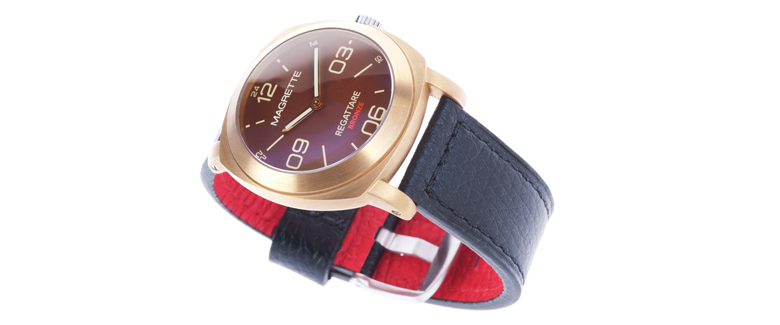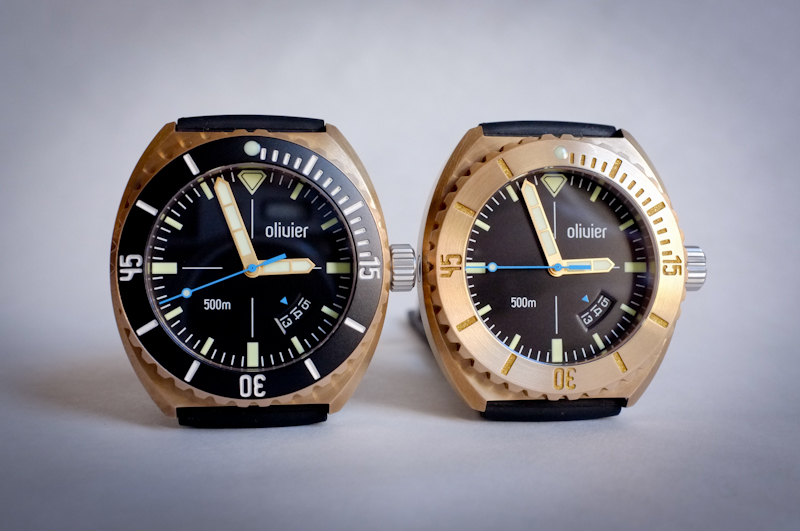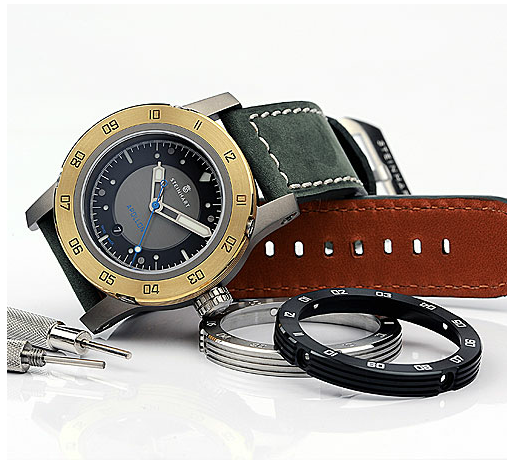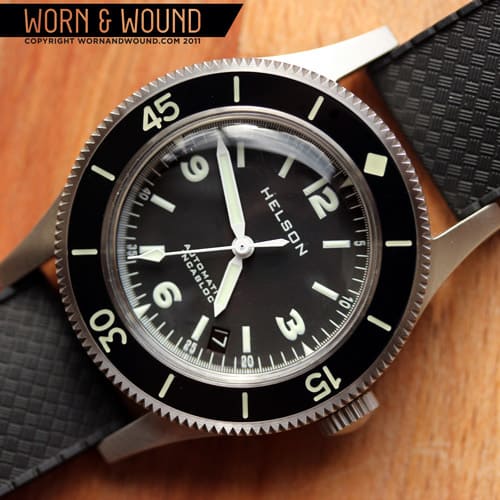What’s on your wrist? Safe bet is that it’s stainless steel, but who among you are the adventurous type? The ceramic pioneers, titanium warriors, carbon fibernauts, and tungsten tanks. Among each of the previous case materials mentioned there is a game of one-upmanship in being more heat-, corrosion-, bang-, bump-, bruise-, and scratch-proof than the next, but what about copper?
Enter the Bronze Age–of watches that is. If you’re a watch collector, you likely already own your arsenal of timepieces to survive sub-zero temperatures, reach water depths inaccessible without a submarine, and have enough shock absorption to withstand a five story drop (hopefully without you wearing it). Bronze watches certainly aren’t those watches, nor do they all try to be.
I’ll be the first to admit that they are not for everyone. Browse Internet watch forums and you’ll find all the proof you need of that. Rarely does a watch collector enter their local AD and request, “Show me only watches made of softer metal that are likely to change color and damage easily.”
What they do offer is diversity for the collector who wants something different. That’s exactly what they’ll get too–because every bronze watch will change uniquely over time as it develops a patina (a tarnish from oxidation of the metal). This corrosion process protects the metal underneath and can take on a neat vintage appearance. Fret not though, because in most cases they can be polished back to new. One user’s experience with forcing the patina is detailed nicely on a WatchUseek Forum here.
Bronze Finds Its Feet
 The market for bronze has big brands such as Hublot, Audemars Piguet, Anonimo, and even Panerai getting in on the action. All beautiful timepieces, but all priced to break the bank. For the purposes of discussing more practically priced options, let’s start by examining the Lum-Tec M-53. This watch retails for $995, but is available at a preorder price of $845.75. The case shape is not much of a deviation from the other M series models and the insides are virtually unchanged. So what justifies the price against their more durable stainless steel or PVD coated models?
The market for bronze has big brands such as Hublot, Audemars Piguet, Anonimo, and even Panerai getting in on the action. All beautiful timepieces, but all priced to break the bank. For the purposes of discussing more practically priced options, let’s start by examining the Lum-Tec M-53. This watch retails for $995, but is available at a preorder price of $845.75. The case shape is not much of a deviation from the other M series models and the insides are virtually unchanged. So what justifies the price against their more durable stainless steel or PVD coated models?
For starters, Lum-Tec does something really nice in the details to create a unique offering. With eight layers of vintage tone luminous application on a matte black dial, the aesthetic of this piece is unlike anything else in their collection. Matched with the solid CuSn8 bronze case that will develop a distinct vintage looking patina over time, it is gorgeous.
Another watch to consider is the Magrette Regattare Vintage Brass. This limited edition model retails for $385. With a 21 jewel Miyota automatic movement, sapphire crystal, and a leather strap, it’s a great value of a watch.
You’ll notice on the dial that it says “Bronze,” and I said “Brass.” Here is where it gets interesting. Magrette discovered, after some testing, that the supplier of what should have been CuSn8 bronze sent them a high quality brass material instead–a metal used in musical instruments that is a mixture of copper and zinc. In a move to make things right, Magrette responded by offering to exchange cases for customers who wanted the bronze instead. While nearly identical when new, the difference between the two becomes evident in the development of the patina: “Brass tends to become darker into a brownish tone, bronze develops into a more reddish, even darker tone with age.” – Source
The Magrette Regattare Vintage Brass is still available in this original “misprint” version over on their website. The mistake has turned into an almost niche collector’s item. More true bronze models are to be released in the future and if they are anything like the first offering, they’ll be sure to impress.
Another two companies to suffer similar issues as Magrette were Helson and Benarus. Their bronze suppliers sent the wrong metal material and left early adopters of models such as the Helson Shark Diver Bronze and Benarus Bronze Moray with something different than expected. Helson and Benarus remedied the situation by swapping old watches for new models with CuSn8 bronze. In Helson’s case, they went so far as to offer a dial color change and provided new straps to customers. They have since gone on to produce some really nice performance bronze models as seen below. Both offerings pack ETA 2824-2 automatic movements and a whopping 500-meter water resistance.
The Helson Stingray Bronze MSRP $1299 The Benarus Bronze Moray MSRP $1470
The situation Magrette, Helson, and Benarus had to deal with highlights how the bronze sector of the watch market continues to take shape and hammer out the hiccups. While some bigger companies have had early success, a lot of questions and development remain to be discovered.
Seriously Pretty Performance
The market is beginning to flood (pun intended) with bronze diver watches, but search for other options like a bronze pilot watch and chances are the list will be short. It’s important to consider if bronze can ever be used for serious performance beyond just water resistance and stands as a development yet to be heavily explored.
The reason for the association with divers, as Olivier Watch Company of Redondo Beach, California puts it, is because of the historical use of bronze for nautical applications given its “great resistance to corrosion.” This accordingly makes it a very functional metal for water performance as evidenced by Olivier’s new line of Bronze Diver Watches: Water resistant to 500 meters, AR coated sapphire crystal, automatic helium escape valve, super luminova dial and hands, 120 click uni-directional bezel and the option for ETA 2824-2 or Miyota 8215 automatic movements all housed in a CuSn8 marine grade bronze and stainless steel backed case. Prices range from $650 for the Miyota up to $850 for the ETA.
It’s a watch that’s as rugged as it is handsome with the difference between this and a stainless steel case built to survive the same depth shows only in the patina–a best of both worlds option in terms of bronze fashion and rugged function.
If you’re still on the fence, let’s examine one last offering from Steinhart. The Apollon automatic is a watch with compromise. Titanium case, sapphire crystal, Swiss ETA 2824-2 automatic, 300m WR, super luminova hour and minute hands, and a calf leather strap, position this as a durable and attractive value for just under $500. The best part is, the bezel is interchangeable. It comes with stainless steel, a DLC coated option, and finally, a bronze option to help you dip your toes into the vintage look without giving up the reassurance of a harder metal case.
My Final Two Cents (See what I did there?)
The important thing to consider with bronze watches is that there is a time and place for them. While they likely won’t be anyone’s first and only timepiece, bronze has carved a nice little corner in the watch market as a unique and attractive metal with room to grow and serious performance potential. At the end of the day it all comes down to personal preference. Those reluctant to part ways with the tried and true stainless steel can’t be blamed, but for those looking to mix things up, bronze just might be your next great watch.
By Tom Caruso









 Featured Videos
Featured Videos











